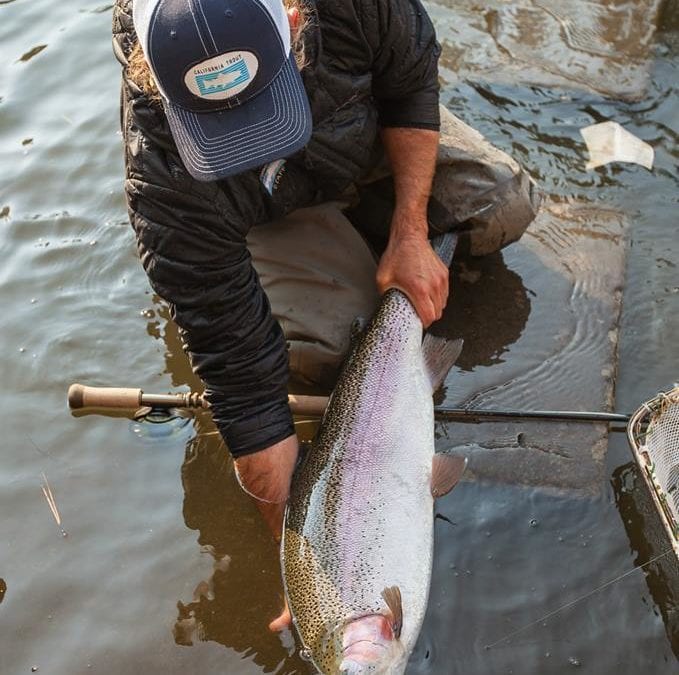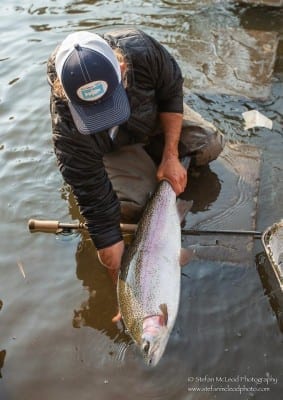A Sign of the Times
Yesterday was a historic day and a sign of the times.
The main stem of the Truckee river has been disconnected from Lake Tahoe since last October. Below the spillway is a large pool below the Hwy 89 bridge. The bridge is dubbed Fanny Bridge because tourist lean over it to look at the HUGE trout that have lived in that hole for decades. Fishing is not allowed within 1,000 feet and they have become a major tourist attraction. I have started many a guide trip by stopping there to let people look at and feed the massive fish. There used to be fish pellet dispensers where you could buy a handful of fish food for a quarter.
Because the pool has had no flow for so long the temperatures were already climbing and the dissolved oxygen was getting low. The water was super murky and brown when it should be crystal clear. Local guides and conservation organizations took drastic measures and talked the Department of Fish and Wildlife and Tahoe City into letting us rescue the fish and put them into Lake Tahoe. The pool is too deep to electro shock and too wide to seine net, so we decided to go with hook and line sampling. Local fishing guides and Trout Unlimited volunteers turned out to help in the effort. Thirty fish were caught all together, the biggest being the one I caught, shown here.
Sad day for the Truckee but good to see these fish relocated to some better habitat for the time being.
– Mike Wier, CalTrout Fly Fishing Ambassador






